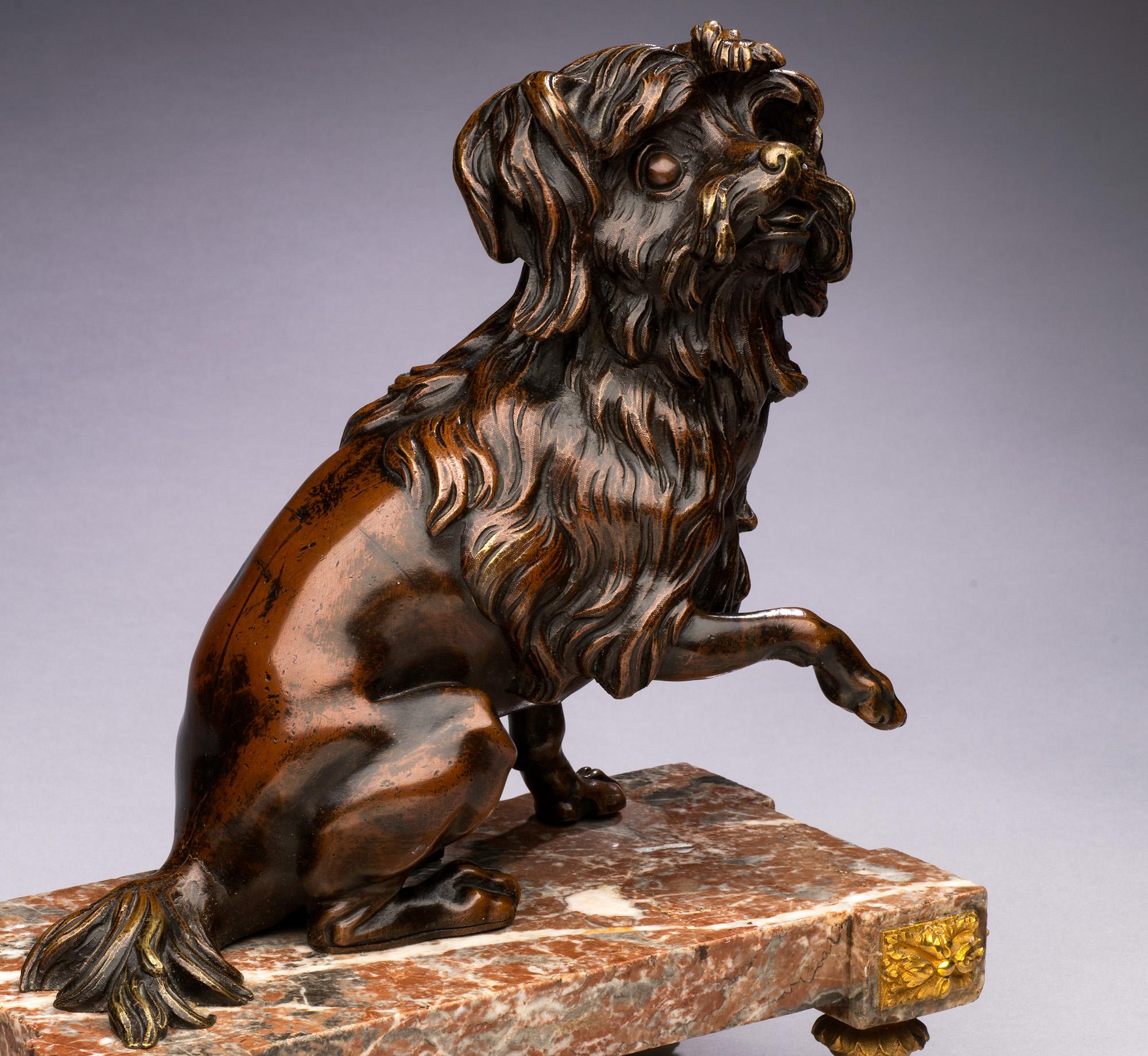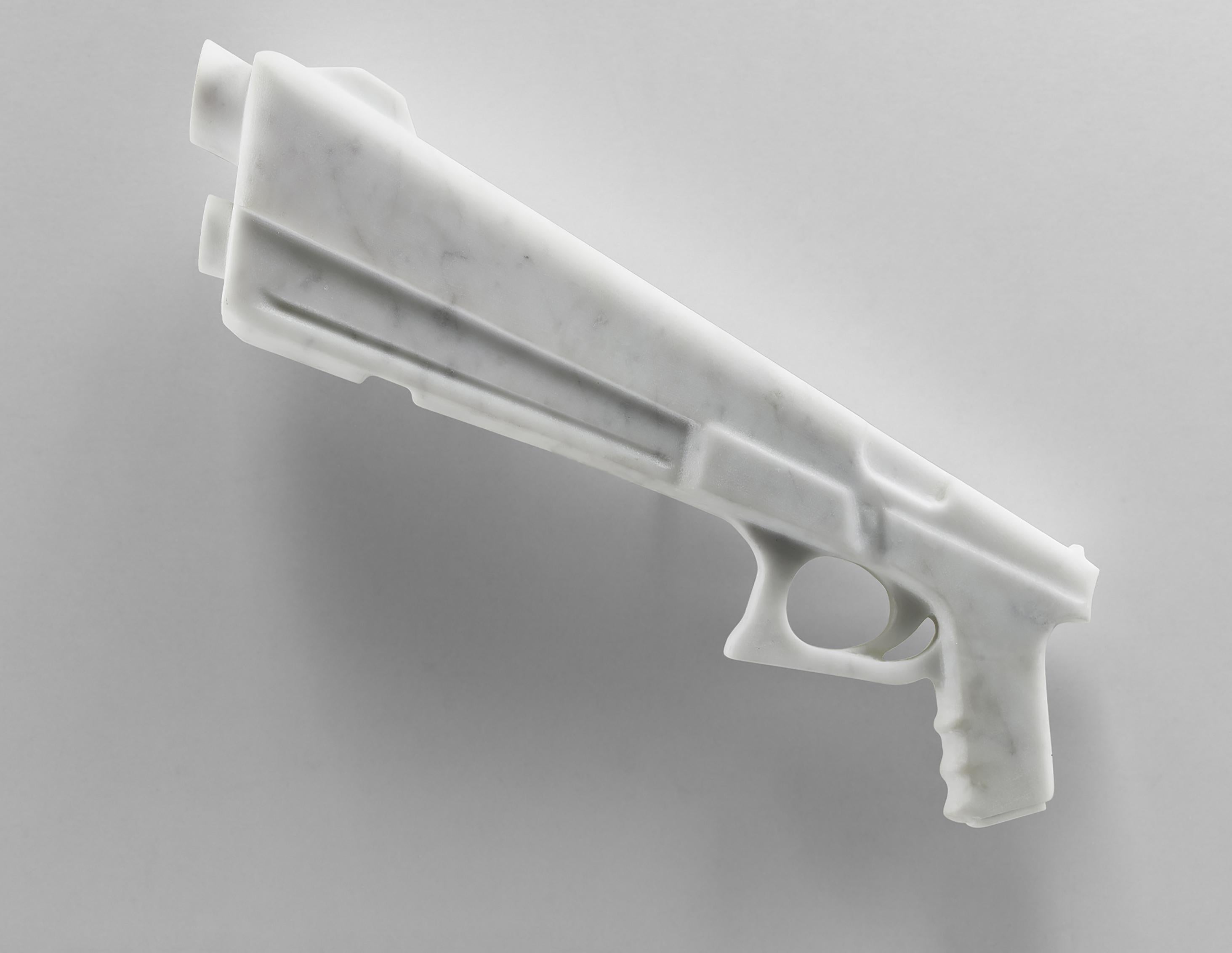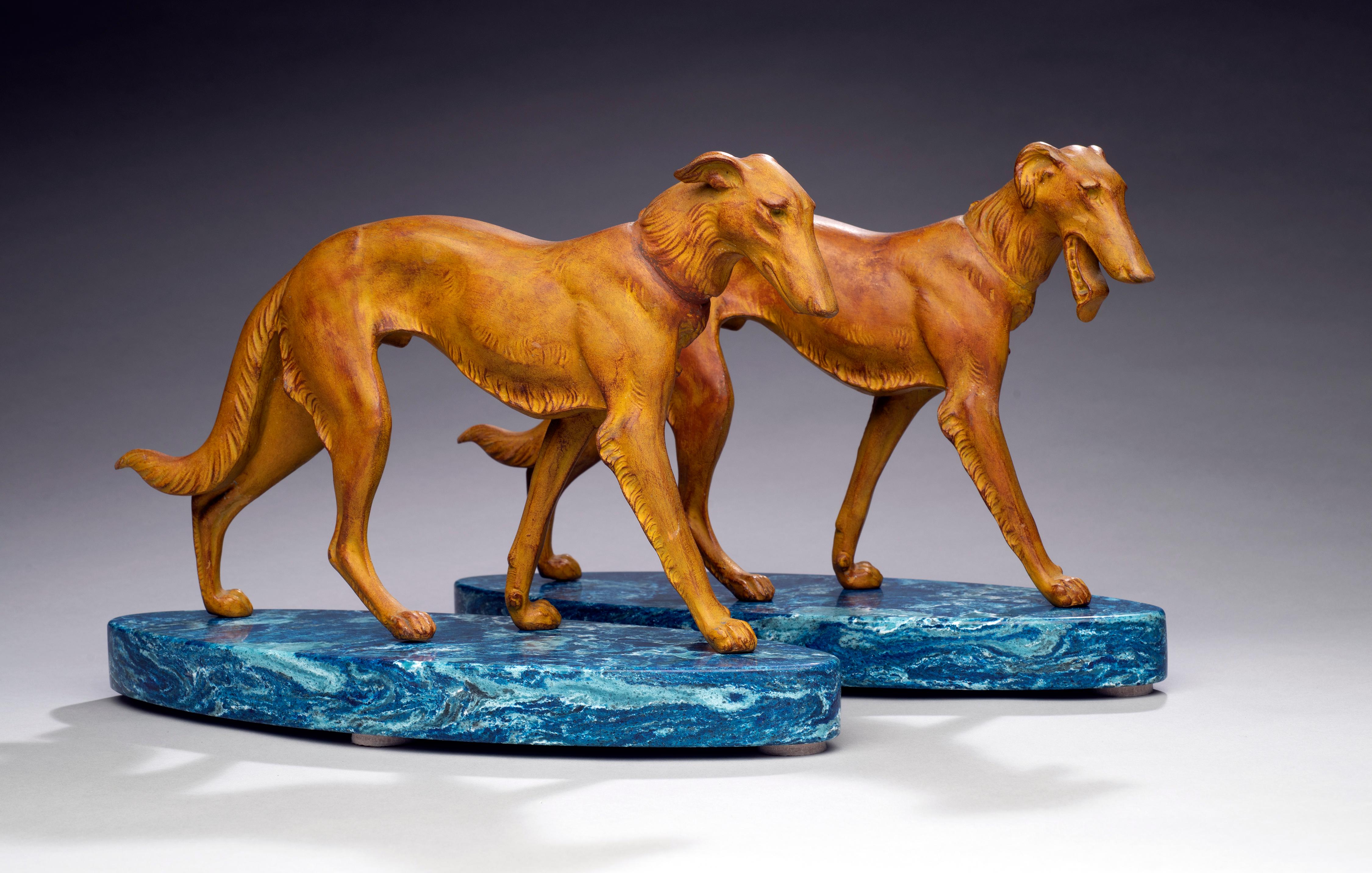Items Similar to 'Waiting For Advisor' African (Shona)
Want more images or videos?
Request additional images or videos from the seller
1 of 3
Samson Nyakanhongo'Waiting For Advisor' African (Shona)2001
2001
About the Item
Comes with mounting 8-1/4"x 6-3/4"x 4"
African Shona Shona artists and crafts people have been working in different media for generations. These include paintings, pottery, basket ware, wood carvings, and sculpture done in metal as well as the stone carvings. While there is not a long standing tradition of sculpture in what is now Zimbabwe (formerly Southern Rhodesia), stone carvings dating from the 15th century were seen in Great Zimbabwe, an excavated temple near Bulawayo. Most of the artifacts from this location have been moved to museums in Cape Town, South Africa or London. It is generally agreed that Zimbabwean stone sculpture as seen today began during the late colonial period of the 1950's and 1960's. During this period the artists and artisans depicted many of the traditional Shona and other tribal spiritual myths. Out of all the nations in Africa, the large varieties and abundant supplies of rock formations present throughout the Zimbabwe landscape provide artists with a medium for sculpture and carvings unique to their country. The Shona art sculpture of Zimbabwe combines the wonderful varieties presented by the stone with images drawn both from reality and abstract symbolism. Much of the stone used by Shona artists is quarried in areas which are adjacent or quite near the villages where the work is created. Often the land on which the stone is found is owned by the village or the local artists. The artists use stone such as Serpentine (somewhat old, having been formed about 2.6 billion years ago), with more than 200 color variations. The hardest and darkest of the Serpentine varieties is black, commonly known as Springstone or Africa stone. Less seen is Lepidolite, with its beautiful pale mauve coloration; and the very hard Verdite, found mostly in darker shades of green but with other variations as well. Commonly referred to as Rapoko stone in Zimbabwe, Steatite is a natural soft stone that falls under the general category of soapstone. Rapoko is found on every continent in the world with the possible exception of Antarctica. Its remarkable qualities have made this stone one of the most widely used minerals on earth. Over 10 million years old, Rapoko is a natural mineral, prized since ancient times for its durability, workability, beautiful character and ability to retain and radiate heat and resist chemicals. Native cultures, the world over, have carved Rapoko/Steatite into vessels, art objects, memorial and cultural items. Carved items have been found in the tombs of Pharaohs, in the igloos of the far north, in temples and palaces of China and India, in the mountains and river valleys of the Americas and the arid plains of Africa. There is a man made ceramic product, also called Steatite, which uses the natural Rapoko stone as one of its raw materials but has no other connection to the skillful efforts of talented Shona and other African artists. The wonderful natural character of stone is used both in its rough cut and textured state, or heated and burnished to a high gloss to reveal rich greens, browns, blacks and grays. The hardness, shape, density and quantity used of serpentine, verdite, sandstone, granite, steatite and other stones define the ultimate presentation of completed Shona art sculptures and carvings.
- Creator:Samson Nyakanhongo
- Creation Year:2001
- Dimensions:Height: 8 in (20.32 cm)Width: 6 in (15.24 cm)Depth: 4 in (10.16 cm)
- Medium:
- Period:
- Condition:
- Gallery Location:Milwaukee, WI
- Reference Number:
About the Seller
4.9
Platinum Seller
These expertly vetted sellers are 1stDibs' most experienced sellers and are rated highest by our customers.
Established in 1966
1stDibs seller since 2017
392 sales on 1stDibs
Typical response time: 2 hours
- ShippingRetrieving quote...Ships From: Milwaukee, WI
- Return PolicyThis item cannot be returned.
More From This SellerView All
- 'Face' original signed cobalt stone Shona sculpture by Obert MukumbiBy Obert MukumbiLocated in Milwaukee, WI'Face' is an original cobalt sculpture by the Zimbabwean artist Obert Mukumbi. This sculpture demonstrates the artist's influence from the great Shona...Category
Early 2000s Contemporary Figurative Sculptures
MaterialsStone
- 'Coming From the Fields' original Shona stone sculpture by Colleen MadamombeBy Colleen MadamombeLocated in Milwaukee, WI'Coming From the Fields' is an original black serpentine sculpture by the celebrated second generation Shona artist Colleen Madamombe. The sculpture presents a character common to Ma...Category
Early 2000s Contemporary Figurative Sculptures
MaterialsStone
- Abstract Figure Contemporary Stone Sculpture Small Modern African Signed EarthyBy Aaron Perkins ChikumbirikeLocated in Milwaukee, WI"Drover" is an original yellow & green opal serpentine stone sculpture by Aaron Perkins Chikumbirike, a contemporary Shona stone sculptor. The artist signed the piece. It depicts an ...Category
Early 2000s Folk Art Figurative Sculptures
MaterialsStone
- 'Mother Elephant with Baby' original small sculpture, heirloom giftLocated in Milwaukee, WIThis small and intimate sculpture of a mother and infant elephant is a heartfelt and doting example of the sculpture of the Shona artists of Zimbabwe...Category
Late 20th Century Contemporary Figurative Sculptures
MaterialsStone
- African Female Figure Stone Sculpture Contemporary Shona Expressionism SignedBy Colleen MadamombeLocated in Milwaukee, WI"Morning Excercise (C-3)" is an original black serpentine stone sculpture by Colleen Madamombe. The artist signed the piece along the base of the skirt. This artwork features a woman...Category
Early 2000s Contemporary Figurative Sculptures
MaterialsStone
- Africa Female Artist Stone Sculpture Figure Celebrate Modern Contemporary SignedBy Colleen MadamombeLocated in Milwaukee, WI"Celebrations (C-56)" is an original black serpentine stone sculpture by Colleen Madamombe. The artist signed the piece, and it weighs 228 pounds. This piece features a woman with a ...Category
Early 2000s Contemporary Figurative Sculptures
MaterialsStone
You May Also Like
- Antique 19th century Bronze Dog Portrait of a Maltese on a Marble BaseLocated in SANTA FE, NMAntique Bronze Dog Portrait of a Maltese on a Marble Base French 19th century 1/2 x 8 x 5 1/2 inches The chiseled bronze has a nuanced, rich brown patina depicting a Maltese in the round, seated on a quadrangular marble base decorated with very fine gilt bronze flowers and fluted feet. Napoleon III, Louis XVI style. Based on a model by Jacques Caffieri for the Prince de Condé in 1773. (More images to be added.) Executed during the nineteenth century, this figure is fully in line with the eclectic taste of the reign of Napoleon III. Indeed, the Empress Eugenie brought the Louis XVI style up to date in her castle of Compiègne. Jacques Caffieri is one of the most famous bronze smiths of the eighteenth century. In 1715 he was admitted as a master caster and chiseler, and worked almost exclusively for the crown castles...Category
19th Century Rococo Figurative Sculptures
MaterialsMarble, Bronze
- Fat GunBy Vincent Du BoisLocated in Miami, FLComing from a family with a long artistic tradition. Vincent Du Bois accomplished to synthesize both classical background and comtemporary vision. From...Category
2010s Contemporary Figurative Sculptures
MaterialsMarble
- Antique Pair of Russian Wolf Hound/Borzoi Dog Portrait Sculptures circa 1930'sLocated in SANTA FE, NMAntique Pair of Russian Wolfhounds/Borzois Dog Portrait Sculptures by Scalini (aka Scali; Italian, 20th century) circa 1930's Patinated spelter 9 x 14 inches (on bases) Though rath...Category
1920s Art Deco Figurative Sculptures
MaterialsCast Stone, Bronze
- Lucien Charles E. Alliot French Art Deco Bronze The Gazelles 1930By Lucien AlliotLocated in Oakland, CALucien Alliot French Art Deco Bronze The Gazelles 1930. The brown patina on a marble base signed on the bronze L Alliot and stamped bronze on the deer. This particular piece has exceptional rhythm where the two gazelles interplay in a movement depicting leaping over the hills or water—a very three-dimensional treatment showing the movement of the animals. Lucien Charles Eduoard Alliot (1877-1967), the sculptor, was born in 1877 Paris, France. His work was part of the sculpture event in the art competition at the 1924 Summer Olympics. He exhibited regularly at the Salon des Artistes Français, was a member and the gold medal in 1920, out of competition, and was a member of the sculpture jury from 1934 to 1939. Alliot was well known for his figurative sculptures, exhibited at the Salon de Paris for many years. He received a third-place award in 1907 (which included funds for travel expenses) and a first-place award l in 1920. After he declared himself out of the artistic competition, he became a jury member at the Salon evaluating sculptural works from 1934 to 1939. Alliot created several allegorical groups, La Paix in 1939, and several religious illustrations: Sacré Cœur in 1924, La Vierge Marie...Category
1930s Art Deco Figurative Sculptures
MaterialsMarble, Bronze
- Silvered Bronze Art Deco Statue by Aurore Onu "Chasing the Hind"Located in Oakland, CASilvered Bronze Art Deco Statue Pair featuring a woman reaching and grasping the antlers of a deer, a rare version of “Chasing the Hind” Designe...Category
1930s Art Deco Figurative Sculptures
MaterialsMarble, Bronze
- "Cleo" Contemporary, Ceramic, Mixed Media, Sculpture, Marble Base, Brass RodBy Lindsay PichaskeLocated in St. Louis, MOSince graduating from the University of Colorado in 2010, Pichaske has risen to attention in the art world. She was an assistant to artist Cristina Cordova, and has been an Artist in...Category
2010s Contemporary Figurative Sculptures
MaterialsMarble, Brass
Recently Viewed
View AllMore Ways To Browse
African Metal
African Wood Sculptures
African Wood Sculpture
Wood Sculpture Africa
Ancient Stone Sculptures
African Wood Craft
Carved African Sculptures
Metal African Sculpture
15th Century Stone Sculpture
Rock And Mineral Sculpture
Stone Sculpture African
Man Waiting
Stone Artifacts
Green Man Sculpture
Man Standing Sculpture
African Carved Wood Sculpture
African Tribal Sculpture
Zimbabwe Art




